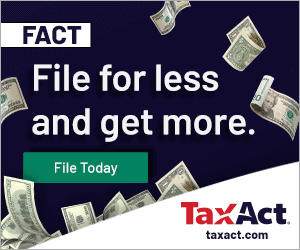3 Tips for Freelancers to Build an Emergency Savings Fund


File your business taxes with confidence.
Backed by our $100k accuracy guarantee.
Despite all the advantages that often come with being a freelancer, there are a few months during the year where you’re willing to give it all up just to get a steady paycheck and feel confident you can pay the bills.
Fortunately, there’s one thing that can overcome the anxiety-inducing fear of a dry month. That one thing is called an emergency savings fund. In lean times, having an emergency fund can provide peace of mind. However, building one on varying income can feel impossible. Here are three ways you can make it happen.
1. Become best friends with the “zero-sum budget.”
Setting a budget is the first step to take when you’re trying to build an emergency savings fund. Only when you have control over your spending can you diligently allocate money toward savings each month. One of the best ways for freelancers and contractors to get started is by building a zero-sum budget.
The premise is simple: live off last month’s income alone. Instead of borrowing from your future paycheck, only count on the amount of money you made in the previous month.
Now, this may sound a little crazy, but start building that budget by spending every dollar. Like we said, it sounds crazy. However, spending in this sense doesn’t actually mean going on a shopping spree. Instead, it simply means assigning every dollar to a particular monthly expense.
To begin, write down your bills. This includes all bills from rent and insurance to Netflix. Also, make a list of any debt payments and savings goals you may have. Next, assign dollar amounts to each of those expense buckets. You’ll quickly see how much you need to cover the bare essentials. You’ll also see areas in which you can trim unnecessary items during months where you don’t have a large cash flow.
As your income fluctuates, so too will the assignments you’re giving your dollars. Some months you’ll assign more to savings and debt repayment, but in others, you’ll need to cut back in order to cover the essentials.
The unfortunate reality is that you may have a month – or more – in which the income you made in the previous month isn’t enough to cover your living expenses. That’s why having an emergency savings fund buffer is critical for freelancers. It gives you a little wiggle room to stay above water when it comes to your basic needs.
2. Put 45 percent of every paycheck into savings.
We get it. Setting aside 45 percent of your money for savings is a painful number to hear. But if you’re serious about building savings and having the ability to pay quarterly estimated taxes, you should set aside 45 percent of each paycheck. Get in the habit of ensuring that amount gets put away no matter how big or small.
Now, the thing to know is it doesn’t all go into the same pot. Earmark 30 percent of it for taxes and 5 percent for re-investing in your business. Set aside 10 percent to build your emergency savings fund. The remainder can be used for living expenses or also reinvesting in your business.
It takes time to build your emergency savings fund with only 10 percent of each paycheck. But being diligent about stashing it away will help you reach at least three months of savings far quicker than you may think.
3. Set a specific and realistic goal to build an emergency savings fund.
This sounds silly, we know. But just saying, “I want an emergency fund buffer” isn’t helpful. You need to have a specific metric you’re trying to reach based on what you reasonably need during a dry month.
It may help to strive to always have two months’ worth of bills saved. That covers things like rent, utilities, insurance, and your cell phone bill. In addition, try to
When setting your goals, start by trying to set aside one month of living expenses. That covers things like rent, utilities, insurance, and your cell phone bill. That may mean you only have $30 to put towards the savings account during a dry month but perhaps $700 in a flushed month. You may also find it helpful to have a checking account that’s solely dedicated to paying your bills so you can better manage your money for those needs. Try to slowly work your way up to have at least three months of living expenses built up in a savings account that also accounts for the cost of living, like transportation, groceries, and household goods.
Setting incredibly specific goals are much easier to reach than having a vague idea about wanting to “build an emergency savings fund.” Even if it takes some time to reach your goal, it’s worth it.






